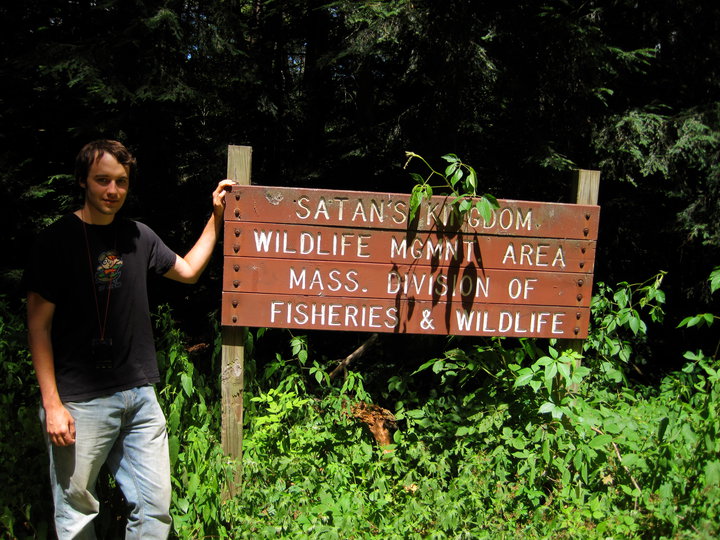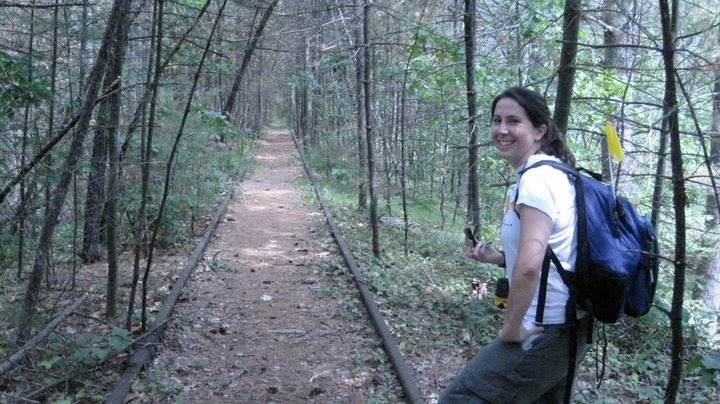You are here
Tracking moose and deer
We have spent the summer happily crawling around in the forest, bruising ourselves under mountain laurel in pursuit of the holy Grail of our project, moose poop. We are studying the impact of deer and moose browsing on the regeneration of forests, specifically looking at hemlock and oak seedlings. This research is particularly important since the number of white tailed deer continues to increase, and moose recently reappeared in Massachusetts after being extirpated since the mid-19th century.
All the same, you don't have to be very knowledgeable about forest life to know that moose don't fit under mountain laurel, so why would we look under those plants? We have been hiking, rain or shine, out into the wilderness to set up plots on points in state-owned lands that are randomly generated by a computer. This often means that our points are in the least convenient places possible, under mountain laurel, on mountain tops, or at the ends of roads that have restricted access because they are associated with a local jail. Once we have managed to get to a site, we establish 20x20 plots in which we look for deer and moose signs. We also take note of the trees and shrubs in order to gain some understanding of the prevalence of deer and moose at a location and their impact on the forest composition.
This data collection is part of a larger project that also incorporates exclosure plots. The exclosure plots are set up in a recent clear cut and consist of a full exclosure (keeps both deer and moose out using fences), a partial exclosure (keeps moose out but allows deer to crawl in through a two foot gap along the bottom of the fence), and a control where there are no fences.
Mickey is interested in the impact of these clear cuts on the level of deer and moose browsing activity not only within the clear cut, but also in the surrounding area. It is known that a larger number of young trees and shrubs growing up in the recently cut plots provide a greater amount of food in a small area, thus attracting a greater concentration of ungulates. He hopes to identify the impact of the clear cut on the surrounding area, seeing how far into the forest the effect of the clear cut can be seen on browsing levels.
Carlyn's individual project is focused on oak regeneration. She'll be looking at oak regeneration in response to all the variables we measure at the plots (overstory characteristics, shrub cover, soil, deer and moose sign, red maple browse index, and physical characteristics of the site). She is also going to use existing GIS data to examine patterns in oak regeneration from a broader land use perspective, taking into consideration ecoregions, habitat fragmentation, and proximity to clearcuts and development.



